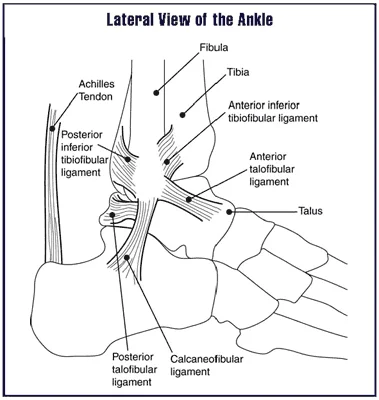
The ankle is made up of several joints giving your ankle multi-directional movement to leap, land, walk, run and turn. Ankle injuries are extremely common and can lead to chronic issues further into the future if they are not managed correctly. Ankle injuries have been reported to be one of the most common injury sites in sports around the world.
The most common ankle injuries are lateral ankle sprains. This is a sprain to the outer aspect of the ankle, usually caused by an overstretch to the ligaments and joints. Sprains can also occur on the inner aspect of the ankle, as well as high ankle sprains known as syndesmosis sprains. In some cases, an ankle sprain can also lead to a fracture. This is known as an avulsion fracture, where a ligament is not ruptured but takes some bone with it. This shows how strong a ligament can be at times! In instances of a direct blow to the ankle, there can be more severe fractures and or altered bone alignment, however, these are rare. They may require surgery to manage ankle recovery. All of these ankle injuries can also leave you at risk of chronic ankle instability. This is where there is constant stiffness, weakness and sometimes pain in the ankle without a direct cause of injury.
Risk factors Include:
Every ankle injury presents differently depending on how the injury occurred and the structure affected. However, an injured ankle generally feels stiff, is painful with physical activity and leads to difficulty with balance-related activities, such as standing on one leg. In serious cases, difficulty weight-bearing on the ankle along with tenderness in certain areas might require referral for imaging in order to rule out a fracture. Your practitioner will determine whether imaging will be needed as part of your management plan.
A qualified health practitioner such as a Physiotherapist can assess patients via a clinical examination. Here, the practitioner can get really clear on the cause and diagnosis of the ankle injury, and begin to identify management options. There are a variety of different physical tests that can be performed within the clinical examination to rule in and rule out certain injuries. If it is believed that there is something more serious causing the ankle pain, this can be discussed between the practitioner, patient, and doctor.
Ankle injuries can be extremely debilitating in some cases, and just bothersome in others. However, even a minor ankle sprain can cause significant issues in the future for many people. This is because your movement gets changed from the ground up. The ankle needs to be mobile and have enough range to make sure we can load properly through our lower half. If we don’t have the range required, our body can figure out other ways to gain the movement required, but this is not always as beneficial as our body may think. More force generated from our knees, hips and lower back due to a restricted ankle can begin to cause issues in these areas also. This is why it is crucial to continue to manage the ankle even after recovery and return to sport. Strength from our ankle and up should be a big focus post-ankle injury.
There are a variety of ways to treat an injured ankle. Options for Manual Therapy include:
An exercise program based on improving proprioception, strength and control of the ankle will be essential to recovery. Exercises based around improving mobility should also be considered in order to improve the range of the ankle joint. Management can also include taping to support the ankle, ice and anti-inflammatory medication to assist in initial pain management, if suitable. In cases where the ankle injury is deemed to be more severe or isn’t improving, an X-ray or scan might be required to further diagnose what is happening within the ankle. However, in less severe cases, imaging will likely provide little to no benefit.
We are a clinic of experienced practitioners working together for you. We use the best scientific research to inform the decisions we take for your care. We do this with honesty and empathy.
Unless there is a fracture or severe bone injury, ankle injuries can be managed in most cases. Our clinicians can screen you to help rule out potentially serious causes. Anything out of the ordinary can be discussed between your physio and your doctor.
Unless a fracture or serious injury is suspected, imaging is not a recommended part of management. If you need imaging, we will let you know and we will also work out what kind of imaging you need. We have more to read here.
Poor balance if related to the ankle is not normal. Your practitioner can give you exercises to assist in making sure you are stable. Poor balance can lead to other injuries that can be significant such as knee injuries and falls/head injuries/concussions.
Your ankle should not feel unstable or feel like it is going to give way when doing everyday tasks or sporting activities. This should be managed and addressed by your health practitioner.
Ankle sprains are graded out of I, II and III. The more severe, the more high-grade the ankle sprain is. This can be determined as part of your injury assessment with your practitioner.
Exercise will likely be a key component of the management of the ankle. For example, balance exercises for a ballerina or jumping exercises for a basketballer could be prescribed. Your practitioner can help determine the best possible exercises for a speedy recovery.